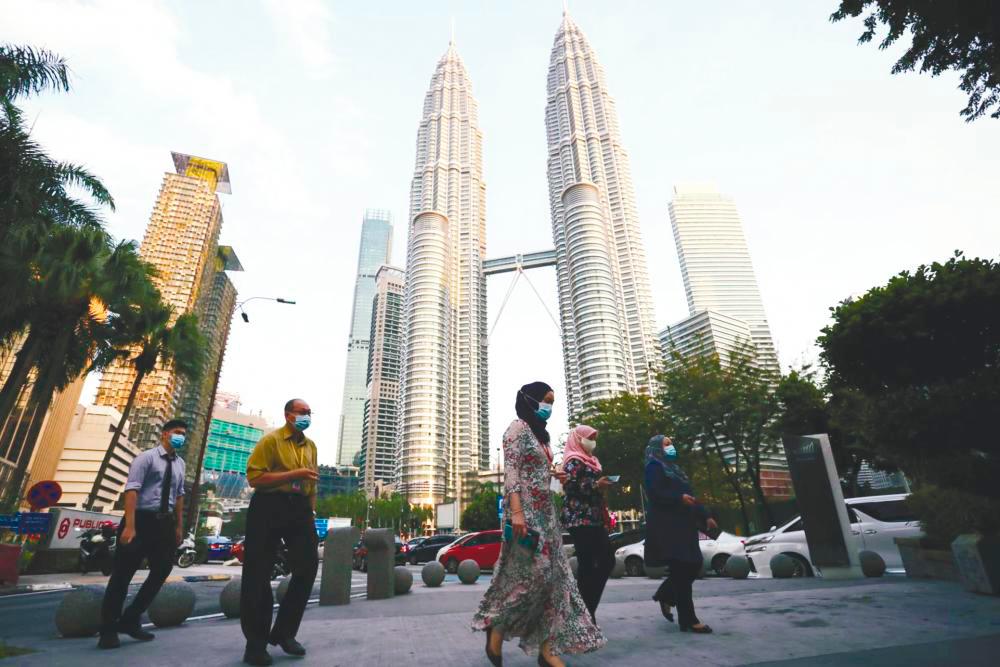LINCOLN: Rows and rows of neat and stylish bungalows with impeccable lawns dot the wide, quiet roads. In the driveway, there are sedans and Sport Utility Vehicles (SUVs).
But there are no tricycles or children’s bikes anywhere in sight in this neighbourhood. Instead, golf carts pepper the driveway. At the Orchard Creek Lodge in the middle of the neighbourhood, white and grey heads dominate.
The message is clear: this is not a place where the young live. But neither is this a place where the elderly go to die.
Sun City Lincoln Hills may look like a typical neighbourhood in the United States (US), but it is not. It is an age-restricted neighbourhood, geared towards seniors aged 55 and above.
“It’s not a retirement community since some people are still working, although some are retired,” said Kyle Bodyfelt, executive director of the neighbourhood’s Homeowners’ Association (HoA).
Growing in popularity in the US, these 55+ communities are described as “active adult communities,” geared toward healthy adults near or past the retirement age with disposable income and few responsibilities, who want to enjoy their golden years with what life has to offer.
These neighbourhoods are usually built near shopping malls, parks, restaurants and other places where residents could socialise. Although there are healthcare facilities and businesses nearby, they are not part of the development.
HoA fees go towards any on-site communal facilities like the two lodges or community centres in Lincoln Hills. The Residents’ Association is active and offers plenty of activities and classes for residents, such as pickleball (a game played like badminton on a tennis court), music and crafts.
Residents Bernama talked to were happy they made the move, describing a life full of travel and socialising with friends.
“There are so many opportunities when you retire. So many things you’re free to do, to learn new things, to travel, it’s just wonderful,” said Carol Shuey, who moved to the neighbourhood with her husband in 2003.
She added they did not feel bereft or isolated from family, visiting their friends several times a year. Relatives can also visit them anytime, although anyone under the age of 55 can only stay at the house for up to 60 days per year.
Considering Malaysia hit the ageing society milestone in 2020, where adults aged 65 and above comprise 7 per cent, there have been calls to expand options for Malaysians who are ageing out but still healthy and active.
But are active adult communities and age-restricted neighbourhoods the answer? Experts say maybe, but are quick to caution that what works for the US may not work for Malaysia.
Cultural differences
Thanks to medical advances, people are living longer and better. Retirement no longer needs to mean living with children or in old folks homes as quality of life becomes as important as longevity of life. Nowadays, once people become senior citizens, they still have many decades where they are active and mobile.
As of 2021, 17 per cent of the US population are aged 65 years and older making them an aged society. In comparison, Malaysia is expecting the number of adults 65 and older to hit 14 per cent of the population by 2044.
In October 2021, the Department of Statistics Malaysia (DOSM) projected that Malaysia may become an aged nation by 2030 with people aged 60 years surpassing 15 per cent of the population, should the falling birth rate of 1.7 per cent trend continue.
This calls for more facilities and services to accommodate the growing number of seniors. In Malaysia, there are no age-restricted neighbourhoods.
Instead, active adult communities comprise self-contained retirement villages, ranging from the basic, such as living in a basic unit with common facilities within the village compound – to the fancy, resort-like apartments with golf courses and assisted living facilities within the same compound. There are not many of these communities available, definitely not enough to meet future demand.
Experts say a significant benefit all of these communities provide is the opportunity for seniors to be sociable, which is crucial for adults as they age.
“Across the board, when it comes to social isolation, it increases your risk of ill health and death to the same amount as cigarette smoking,” said Prof Dr Tan Maw Pin, from the division of geriatric medicine at the University of Malaya (UM).
“I can go treat strokes or heart disease very well, but this person will still not become well if I don’t look after the social side of things,” she added.
In Malaysia, social isolation among seniors occurs in myriad ways. Culturally, there is a heavy emphasis on children taking care of their aged parents, although expectations are changing.
Dr Tan said one way is when parents, who become too old or sick, go live with children where they usually end up being isolated because their families are too busy and they don’t know anyone. Other ways include widowhood and social anxiety.
“Our population (is unwilling) to make new friends after a certain age,” she said.
Consequently, experts say few retirement age Malaysians will choose to move into retirement villages or age-restricted neighbourhoods even with the promise of a more active social life, preferring to stay in their current houses and social networks or move in with their children.
UM Department of Real Estate Head Dr Sr (surveyor) Dr Ainoriza Mohd Aini told Bernama that seniors in Malaysia also tend to be frugal, preferring only to purchase new property as an investment, rather than for their comfort.
“For Malays, when we did the in-depth interview, they feel that as they get older, they do not want to spend any more money and ... retirement villages are not cheap,” she said.
Ainoriza and her team interviewed 768 people, aged 50 and above, on housing preferences upon retirement in 2015 with a survey grant from the Finance Ministry. They found that 22 per cent were willing to move as part of their retirement. Of that figure, only 5 per cent were willing to move to a retirement village.
“Very small (number of) Malaysians wanted to move into a retirement village. Majority of Malaysians want to age in the current home they’re living in,” she said.
Because of this low interest, she said developers are less likely to design retirement communities for active adults.
However, she also stressed that people’s ideas on retirement living may have changed in the seven years since the survey was done.
One of them is stockbroker Cik Khuzaimah Abdul Malek, who was intrigued when she heard about active adult communities and age-restricted neighbourhoods. At 48 years old, she has been thinking about the future as her children move out to attend school and university, and she and her husband near retirement age.
She told Bernama her main interest in moving to such a place would be to make friends with more varied interests.
“I don’t have any friends here who can play badminton or go hiking with me,” she said.
Building on the present
Ironically, many Malaysian neighbourhoods already resemble adult active communities albeit without the age discrimination. Experts say that just like the retirement communities in the US, these neighbourhoods are composed mainly of seniors, who socialised with, kept tabs on and took care of each other.
However, the demographic change in these neighbourhoods occurred organically rather than by design, when the children grew up and moved out.
“There are lots of tamans (neighbourhoods) in the country where the children are all in the cities, working in Penang, Johor, Kuala Lumpur or Selangor,” said Delren Terrence Douglas, president of the Association for Residential Aged Care Operators of Malaysia (AGECOPE).
“Instead of getting (the seniors) to purchase a new residence and to move into a new residential area, meaning if the existing tamans are converted to such a place, it is more workable,” he said.
He added residents, charities, and local and federal governments should encourage businesses and services catering to the seniors and the elderly to move in close to these neighbourhoods, as well as a welfare system to assist any elderly who may not be able to live as independently in their home as before.
He also said town planning around these neighbourhoods should also have seniors in mind, such as putting in benches every few metres or so for the elderly to rest.
Dr Tan agreed, saying nearby clinics and healthcare facilities should also develop expertise catering to seniors.
“There is (usually) a Klinik Kesihatan nearby but they might not know how to specifically care for the (seniors),” she said.
Ainoriza said the focus should not stop at just improving access to healthcare and other services but also include revamping current retirement villages and units, many which are not senior-friendly.
She warned Malaysia is not ready to face an aged nation in 2030, should DOSM predictions come true.
“Frankly, we are not ready yet. Everywhere you see, a lot of the facilities are not universally designed, not elderly-friendly,” she said.
Other issues facing the ageing population is the lack of retirement savings. The pandemic wiped many people’s retirement funds, with 6.1 million members having less than RM10,000 in their accounts, according to the Employees’ Provident Fund (EPF). EPF has estimated a single person needs at least RM240,000 before retiring, in order to cover basic costs.
For this, Dr Tan suggested everyone to look into getting term life insurance, which is similar to life insurance but also covers disability or illness.
She added that while Malaysia may not see age-restricted or retirement neighbourhoods anytime soon, it does not mean ageing needs to be a painful and lonely process.
The key to the success of the active adult communities in the US is that it allows for a low maintenance lifestyle that maximises social interactions and ageing in comfort.
“If we could develop services where these people could age in place, that would be amazing. And it can be an evolving retirement village kind of concept,” Dr Tan said. -Bernama










